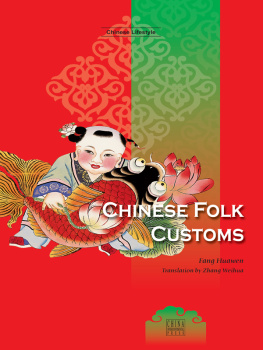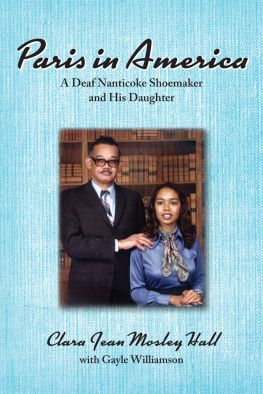Preface
WHEN I made Delaware my home several years ago, it was solely because new business opportunities had presented themselves through an intermediary of a large corporation by which I was destined to be employed. The subsequent decision to move family and household effects to Wilmington opened up a new phase of existence that was to bring gratification I had not known before. The new business connection was, and continues to be, a source of pride and satisfaction, at the same time providing adequate means for sustenance in return for my humble services. Quite apart from this necessary but not unpleasant quest for a living, I found in Delaware many things equally enjoyable to occupy the hours between the close of one work week and the opening of the next. What this little state I now call home lacks in size finds compensation in its traditions, people, and the fund of material for those curious about the life of centuries past. The fields along the Brandywine, which once ran red with patriots blood, the old covered bridges, the colonial architecture of New Castle, the Cape Henlopen sand dunes with their buried pirates gold, the Christina River valley and its farms, historic sites, and memories of Peter Minuit, Johan Papegoja, Jean Paul Jacquet, Peter Alrichs, and pot-bellied Johan Printzall are worthy of more attention than has yet been given them in American Literature.
I lived in Delaware only a short time when I was told of the existence in the southern part of the state of a strange breed of people called Moors and Nanticokes. My interest whetted, I asked the usual questions that come to ones lips when he learns for the first time of a people shrouded in mystery. Who were they? Where did they originate? I was told many fantastic stories. They were allegedly descendants of a red-haired Irish beauty who married an enslaved Moorish prince; their forebears were eighteenth-century Spanish pirates marooned on the bay shore and rescued by Indian women; they were all that remained of an unrecorded Moorish colony established centuries ago in the lower Delaware Valley. These conflicting legends intensified rather than relieved my curiosity. Purely for personal satisfaction and as a hobby to occupy leisure hours, I set out to seek an authentic account of these folk in old newspapers and books. The paucity of information in these sources left my curiosity unsated, and I took other avenues.
Inquiries brought me closer to the obscure corners of the state where the Moors and Nanticokes live and where anecdotes of specific individuals and events met my questions. Tales were told of a woman among the Nanticokes who never owned a stove but cooked over an open fireplace in her cabin in the pine-woods for more than seventy-five years; of a man with long hair and features like an Indian who walked sixteens times from Millsboro to Philadelphia, a round-trip distance of more than two hundred miles, sleeping en route in graveyards; of a school system where whites, Negroes, Moors, and Nanticokes each demand separate accommodations; of a court case where an Indian was proved a Negro by spiteful neighbors; of herb doctors and magic cures; of Moors who have Negro cousins in one city and white cousins in another. These tales carried my interest to new heights.
One day it fell my good fortune to meet some of the people called Moorsthen later I met some of the Nanticokes. I visited with them in their fields and in their schools and churches. I made friends with many of them and learned to call them by name. Asked to come into their homes, first to chat, then to eat, I finally after several months achieved the rare honor of sharing their hospitality as an overnight guest. Over a period of years, impressions began to gather in my mind. The people stood forth in their true light, and through them I found the answers to the questions that puzzled me. Inasmuch as the information I had gleaned from pursuing my hobby is, for the most part, not readily available, it seemed to me that it should be accessible to others. Undoubtedly others as curious as myself would like to have their questions answered, while those who have never heard of the Moors or Nanticokes of Delaware might be interested in knowing of them. That is the reason I wrote Delawares Forgotten Folk. It is offered not as a textbook nor as a scientific discussion, but merely as reading entertainment founded on the life history, social struggle, and customs of a little-known people.
I want to acknowledge the assistance of a number of persons who helped to make this story possible. My good friend L. T. Alexander, a camera hobbyist, devoted many hours to the excellent photographs which are seen in the book. John Swientochowski, who made the ink drawings, is also a capable and painstaking brother hobbyist, and I am indebted for his assistance. Leon de Valinger, Jr., Archibald Crozier, H. Geiger Omwake, Dr. H. V. Holloway, Robert Tatnall, Seal Brooks, and William B. Marye were also most helpful in supplying data or reference material otherwise not available.
The manuscript was previewed entirely, or in part, by Jeanette Eckman, Anthony Higgins, William P. Frank, John P. St. Vincent, Dorotha Redman Hurst, Walter Hurst, and my indulgent wife, Ruth Weslager. Their combined assistance and constructive criticisms are deeply appreciated. Above all, I am greatly indebted to Dr. Frank G. Speck, who read and criticized each chapter as it was written, and to many Moor and Nanticoke friends who never objected while their histories and personal affairs were being probed.
C. A. W.
July 1, 1943
Wilmington, Delaware
1. Red, White, and Black
DURING his explorations three centuries ago, Captain John Smith sailed across Chesapeake Bay to land on a pine-forested peninsula occupied by wild animals and Indian tribes, which he called the Eastern Shoare of Virginia. Salt boilers were later stationed on this peninsula to evaporate salt from the water for use by the Virginia colonists on the western shore of the bay. In due time, planters sailed over from Jamestown and founded a new colony on the fertile soil. The Eastern Shore was also accessible by boat from Delaware Bay; and the Dutch, Swedes, and Finns came to compete with the English colonists for the profitable Indian fur trade and other resources of the New World. The story of how the whites erected forts, established settlements, and gradually seized control of the land from the natives has been told many times. In the clash of interests between nations, the English were ultimately victorious, and the Dutch, Swedes, and Finns lost their authority over the territory.







